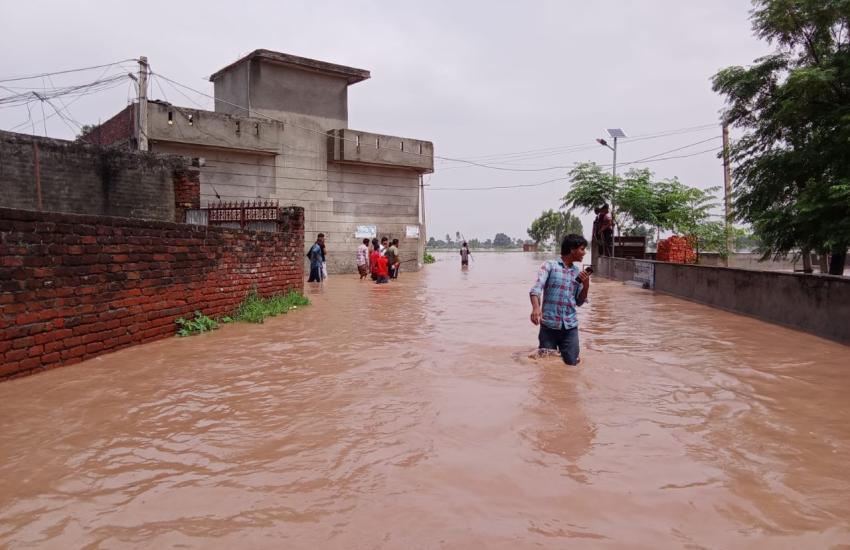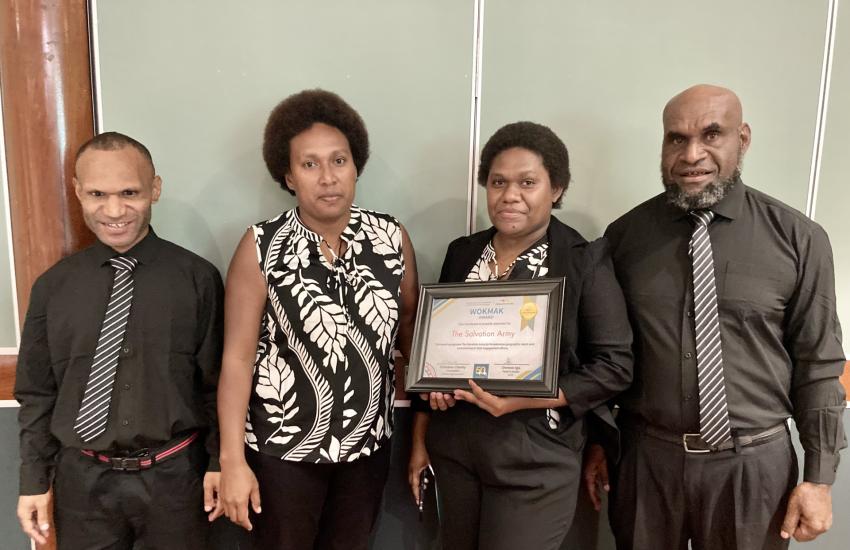Kanyakumari is the very tip of India – a place of great scenic beauty where the Bay of Bengal, the Arabian Sea and the Indian Ocean meet. The Salvation Army is working in the village of Kanyakumari and the neighbouring village of Kadiyapattinam to restore the lives of those affected by the tsunami. There is still a great deal to be done but progress is being made.
The Salvation Army was the first group to arrive in these two communities of 21,000 people on Boxing Day 2004, helping to retrieve the bodies of those who had perished in the Tsunami. The Kadiyapattinam parish chairman said: ‘When The Salvation Army first came here and asked what they could do to help I was sceptical, but as the days are passing we are seeing their work.’ Father Gino, the parish priest, added: ‘The Salvation Army has stolen our hearts; they were with us from the start and they will be with us till the end.’
In the first days after the Tsunami normal life had disappeared. Most of the inhabitants were traumatised by the experience and many needed medical care. Mr Benny Dahya and his team from the community health and development programme at the Catherine Booth Hospital in Nagarcoil ran a training programme with the parish council to equip local counselling staff to help their neighbours cope with their loss. The hospital brought medical teams to the villages and over the next four months they treated 20,000 patients. Some patients had to be referred to the main hospital where they were treated free of charge. In a story that sounded like a version of the Nativity, a man told me: ‘We were living in a temporary shelter and my wife had to give birth. She is a diabetic and we had no money for the delivery fees. The Salvation Army gave us free treatment.’
Whereas there were poor people in these communities before the tsunami, the general population were making a reasonable living from fishing. They were not very familiar with banks, so all their savings were kept as cash stowed in different hiding places in their houses. When the tsunami struck, these normally self-reliant people became instant paupers as their life savings were literally sucked out to sea with all their possessions. The Salvation Army relief team continued to distribute food for two months until people were able to start earning an income again.
After the loss of life the gravest loss to the communities was that of the fishing fleet. Many of the boats were destroyed and engines damaged, ruining the livelihood of the whole community. It was obvious that the fastest way to restore the community’s self-reliance was to get the fishing industry up and working again. Starting with the most basic things The Salvation Army repaired 70 fishing boat engines that had been damaged by the tsunami, enabling 350 fishermen to get back to work. Now it is building 250 traditional catamarans.
On the day I visited I watched a catamaran being built. The main tool used was an axe and it was amazing to watch the craftsman using this unwieldy tool as a fine shaping instrument. I am sure I could have shaved with the axe, as it was razor sharp. And each cut landed in precisely the right place. Needing no measurements other than a lifetime of experience, the craftsman expertly formed the catamaran. The Territorial Commander, Commissioner P. Devavaram, and his wife were with us on our visit and he was able to dedicate the first fibre-glass boat made. There is an order for a further 89 boats which will be manufactured in the next two months. We then went down to the beach where the commissioner was to dedicate a new wooden catamaran. The Salvation Army will make an additional 249 of these and supply fishing nets to 210 fishermen.
The government built temporary shelters for the tsunami survivors but these were not satisfactory in the extreme heat and severe rainfalls. The Salvation Army was able to step in and construct some awnings and extra cover to keep out the rain. Concrete floors helped make the shelters cleaner, and properly built toilets and bathing areas made these spartan conditions habitable. Living conditions are still very difficult and with the monsoon season approaching the situation will get worse, but the residents can see that there is hope for a better future. One of the residents told me: ‘The government built temporary shelters – they were not good. The Salvation Army fixed the shelters so they are now clean. The heat was terrific but now the camp is a model for other villages.’
The Salvation Army also had to construct 72 additional shelters. To date, more than 160 homes have been repaired and families are now back in them. The response of Josephine, owner of one of the homes, is typical: ‘I lost everything, my house was damaged and now it has been repaired.’ I was able to visit her home. It is close to the water and has a million-dollar view, but the light in her eyes is even more wonderful to see. All through the village, as homes are being repaired, life is returning to normal.
Some 80 homes have been destroyed beyond repair. After a long negotiation with the government it has been agreed that people can now rebuild their homes on their original sites, provided they are safe from the sea. This reconstruction will start immediately.
In other parts of India, Sri Lanka and Indonesia the Salvation Army is seeking to meet the long-term needs of communities devastated by the tsunami. The scale of what remains to be done is breathtaking, but community by community, home by home, hope is returning.
Major Seth Le Leu
International Projects and Development Services Secretary





